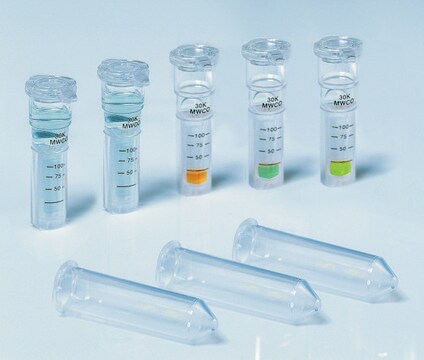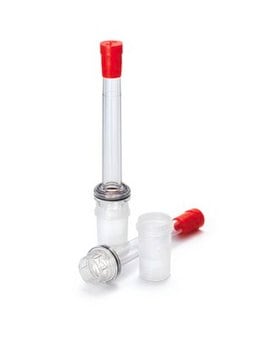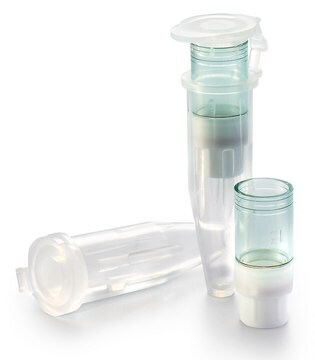13239E
Centrisart® I centrifugal ultrafiltration unit
MWCO 10 kDa
About This Item
Recommended Products
material
polystyrene housing
polystyrene outer tube
polysulfone membrane
sterility
non-sterile
packaging
pack of 12 tubes
manufacturer/tradename
Sartorius 13239E
parameter
2000 × g max. force (fixed angle)
2500 × g max. force (swinging bucket)
filtration area
0.79 cm2
outer sample tube W × L
14 mm × 93 mm
tube size
~15 mL
working volume × concentrate volume
2.5 mL × 100
pore size
10 kDa MWCO
Looking for similar products? Visit Product Comparison Guide
General description
Filters: cellulose triacetate or polysulfone.
- Centrisart® I centrifugal ultrafiltration unit is ideal for the separation of small-volume proteins from low molecular weight substances in biological samples.
- The unit works in the direction opposite to centrifugal force which prevents premature filter blockage.
- This versatile device is utilized in both fixed-angle or swinging-bucket rotors that hold standard 15 mL tubes.
- The product is collected in the easily accessible floater insert tube.
Application
- Protein removal from blood samples
- Drug binding studies
- Cleaning of liposomes (cell lysates)
Legal Information
Choose from one of the most recent versions:
Certificates of Analysis (COA)
It looks like we've run into a problem, but you can still download Certificates of Analysis from our Documents section.
If you need assistance, please contact Customer Support.
Already Own This Product?
Find documentation for the products that you have recently purchased in the Document Library.
Our team of scientists has experience in all areas of research including Life Science, Material Science, Chemical Synthesis, Chromatography, Analytical and many others.
Contact Technical Service




